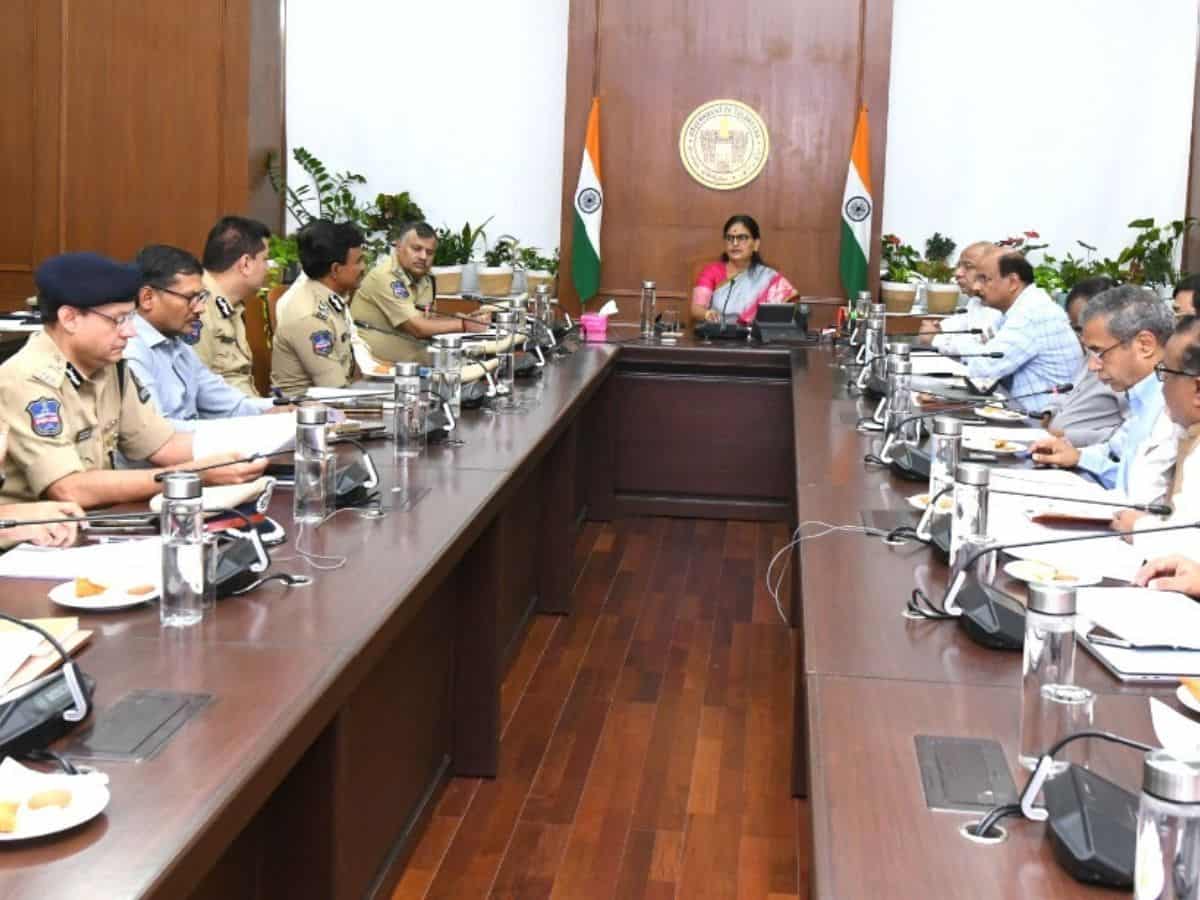
Hyderabad: Telangana chief secretary (CS) A Santhi Kumari on Thursday, September 12, reviewed the preparations for the ‘Telangana Praja Palana Dinothsavam’ to be conducted on Tuesday, September 17, which was previously observed as ‘National Integration Day’ by the previous state government. The BJP-run Centre had however termed and earlier observed it as ‘Hyderabad Liberation Day’, a term that fits into the right-wing narrative of the Hyderabad state’s annexation to India on September 17, 1948.
The chief secretary (CS) announced that chief minister Revanth Reddy would hoist the national flag at Public Gardens in Nampally, after paying tributes to martyrs at the Telangana Martyr’s Memorial (Amaraveerula Stupam) at Gun Park, Hyderabad.
Santhi Kumari directed top officials in a meeting held at the state secretariat on Thursday, to work in close coordination across various departments to ensure the smooth organising of events on the occasion. The city police has been given traffic duties while the municipal authorities have been directed to complete road repairs near the venues, and also to ensure proper sanitation, fogging, cleaning and decoration of the venues.
The CS directed officials to light up Raj Bhavan, Secretariat, Assembly and High Court, as part of the event. Energy department was directed by the CS to ensure uninterrupted power supply at the venues while water board officials to ensure water supply. Fire and safety department was directed to station their response vehicles at various venues.
‘National Integration Day’ to ‘Telangana Praja Palana Dinothsavam’
Last year, in a push to politically capitalise on the the event, the Bharatiya Janata Party (BJP)-run central government announced that it would organise a year-long ‘celebration’ marking ‘Hyderabad Liberation Day’ starting from September 17. On that date in 1948, the erstwhile state of Hyderabad run by its Nizam, Osman Ali Khan, was annexed to India.
The annexation of the erstwhile state of Hyderabad has gained political significance after the formation of Telangana especially due to the BJP pushing the earlier Bharat Rashtra Samithi (BRS) government to observe the day. While the date passed-off without much noise in the first handful of years after the state’s formation, it however became politicised and a matter which the then BRS could not ignore.
Under pressure from the BJP, the BRS then announced last year that it would observe ‘National Integration Day’ on September 17. The merger of the erstwhile Hyderabad state into India is a painful memory for many Muslims, after thousands from the community were killed in its aftermath, especially in the Maharashtra and Karnataka areas of the Hyderabad state.
The irony however is that the BJP did not exist when the state of Hyderabad was annexed with the military offensive called Operation Polo. In fact Telangana was mostly in control of the Communist Party of India (CPI). The Indian army was sent by the Centre on September 13 after negotiations with the last Nizam Mir Osman Ali Khan fell through after independence.
The atrocities against Muslims that took place after Operation Polo are well documented in the Sunderlal Committee (set up by India’s first PM Jawaharlal Nehru) to look into the atrocities of Muslims) report.
What is Operation Polo? Why is Sept 17 important?
The term Liberation Day is a malicious term aimed at painting the (Hyderabad). The date marks the day when the erstwhile state of Hyderabad, which comprised Telangana and parts of Maharashtra and Karnataka, was annexed to India through the military action called Operation Polo or Police Action.
However, the irony of the BJP’s demand is that it was literally a non-player in 1948 and in state politics then. Its ideological parent, the Rashtriya Swayamsevak Sangh (RSS), had been active, but its role was very limited given the fact that in Telangana it was the Communist Party of India (CPI) which had taken over most of the rural areas. The CPI in fact organised the ‘Telangana Armed Rebellion’ against state-appointed Jagirdars, the landholding class that comprised both Hindus and Muslims.
It was essentially an uprising against feudal landlords by peasants in Telangana. “The flip side of it is that the Telangana Armed Rebellion, which continued till 1951, is another reason the army had stayed back in Telangana, as the then Indian government headed by former PM Jawaharlal Nehru, were wary of the communists, who refused to lay down their arms
That resulted in the army going after the communists, due to which over 4000 CPI cadres were sent to jail until 1951. However, the matter was resolved after the CPI decided to call off the struggle on October 21, 1951 (Telangana People’s Struggle and its lesson: P. Sundarayya) and contested the first general elections.
But there is a lot more to Police Action, given that at least 27000 to 40,000 Muslims died due to targeted communal killings in the Hyderabad state.



